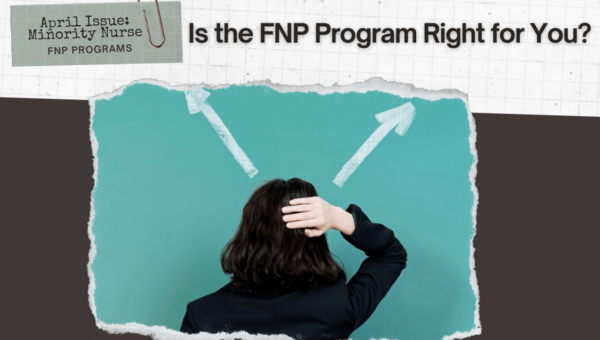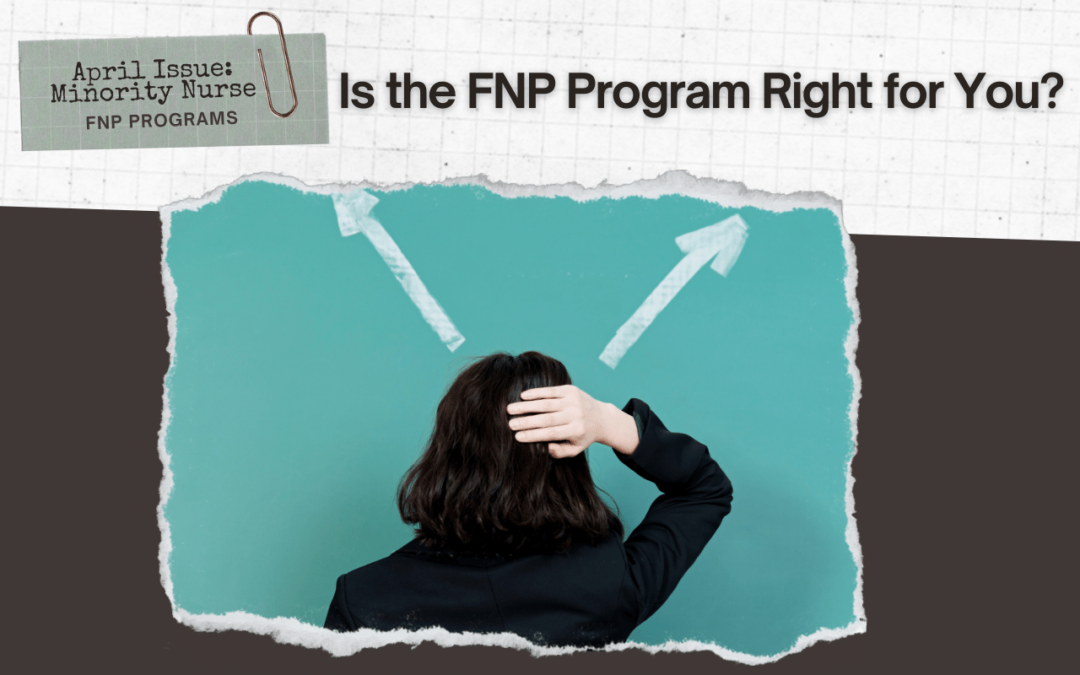The family nurse practitioner (FNP) credential is a popular choice for nurses considering the right academic path to becoming nurse practitioners.
While nurses can choose a route that addresses more specific populations, such as a pediatric NP, a psychiatric NP, or an adult-gerontology NP, the FNP offers an opportunity to treat patients across the lifespan—from infants to centenarians.
In fact, according to the American Association of Nurse Practitioners (AANP), 70 percent of nurse practitioners are FNPs.
The appeal of the FNP is rooted in both the patient care opportunities and the professional autonomy the FNP offers. “The premise behind the FNP is to provide holistic care for all individuals,” says Julia M. Steed, PhD, APRN, FNP-BC, CTTS, academic director of the Family Nurse Practitioner Specialty and assistant professor at Vanderbilt University School of Nursing. She says that FNPs focus on an approach that emphasizes health prevention and promotion appropriate for different lifestyles and cultures. It’s an approach that’s useful in many healthcare settings.
Nurses choose a path for many reasons, often based on a mix of personal and occupational experiences, says Tearsanee Carlisle Davis, DNP, FNP-BC, PMHNP-BC, FAANP, the director of Clinical Programs and Strategy at the University of Mississippi Medical Center (UMMC) Center for Telehealth and an associate professor at UMMC. “Originally, I entered a nurse educator program because of my love for teaching,” Davis says. “However, after the first day, I knew I loved patient care more. I switched programs and became an FNP. One of the main reasons for my choice was my hometown and the needs of the people there. I knew that nurse practitioners were the answer, and I was excited to become a part of something that could change people’s health.”
Jo Loomis, DNP, FNP-C, CHSE, CLC, ANLC, NCMP, CNL, associate professor in the School of Nursing and Health Professions at the University of San Francisco, realized that her original midwifery plan would better serve her if she could do what she found was pulling at her—being able to care for the whole family. Nursing students, she says, can keep an open mind as they are moving through clinical settings that will include other NP areas, such as pediatrics or women’s health, and can pay special attention to the especially appealing areas—or notice if they all are.
Loomis says that as an FNP, a nurse can have a broad scope of everything that may contribute to a patient’s health. They focus on the tenets of health promotion, risk aversion, and disease prevention. “They take it all into consideration,” Loomis says, including that other factors might influence a care plan or other people involved. She says the role consists of listening to the patient’s health concerns and what is happening in their lives.
The FNP is an excellent choice for many nurses, but not all. If nurses are trying to decide the best credential, Davis says to remember what is truly important. “I believe [nurses] should answer their ‘why’ for advancing their education first,” she says. They will be more successful if they can prioritize what makes them tick. “I believe that by knowing their reason for choosing a path, they will understand the responsibility that comes with it,” she says. The FNP, says Steed, includes a little bit of everything, which gives an FNP the ability to adapt to different patients and settings. Steed has used her FNP as a practicing nurse in areas ranging from chiropractic to urgent care to weight loss.
Finding the right academic program to earn an FNP is essential to a nurse’s success. Many factors influence the decision, and each nurse will have different priorities. The final decision includes determining what will work for course delivery (online or on campus), cost, location, and the length of the program. However, while the school’s reputation and the strength of the faculty are top-of-the-list fundamentals, a flexible approach will be helpful. Automatically thinking the shortest program is the best can be detrimental. “It takes time to learn the role and become fully equipped as an NP,” says Loomis.
Steed also recommends that nurses look into the student support available. Supports include all the assistance a grad student needs, including library help, career coaching, and even grad services counseling. Assessing what kind of research the school’s faculty members are working on and possibly reaching out to them individually also offers insight into what opportunities will be available as an FNP student.
Davis, who has used her FNP in settings as diverse as private practice, community health, emergency medicine, and academia, recommends putting in some work before making a decision. “I think they should study it and talk with others who have been successful on the journey,” she says.
This crucial role allows nurses to make meaningful and measurable changes for families in their communities. In practice settings, the FNP, with a broad understanding of all ages and health conditions, is an expert in triaging what is within their scope to treat and what might need additional expertise or specialists.
Once nurses are in practice as FNPs, they are often rewarded with seeing the change that comes from their work. “For me, it was the satisfaction of knowing I was meeting a real need in the community. Nurses are often the ones who connect with the patients and family. As an NP, I felt better prepared to educate and provide care. My FNP experience opened many doors for me, many of which I could have never imagined,” Davis adds.
- Is the FNP Program Right for You? - April 24, 2024
- WOC Nurses Week Highlights Specialty - April 16, 2024
- Honoring Radiology Nurses Day on April 12 - April 12, 2024



